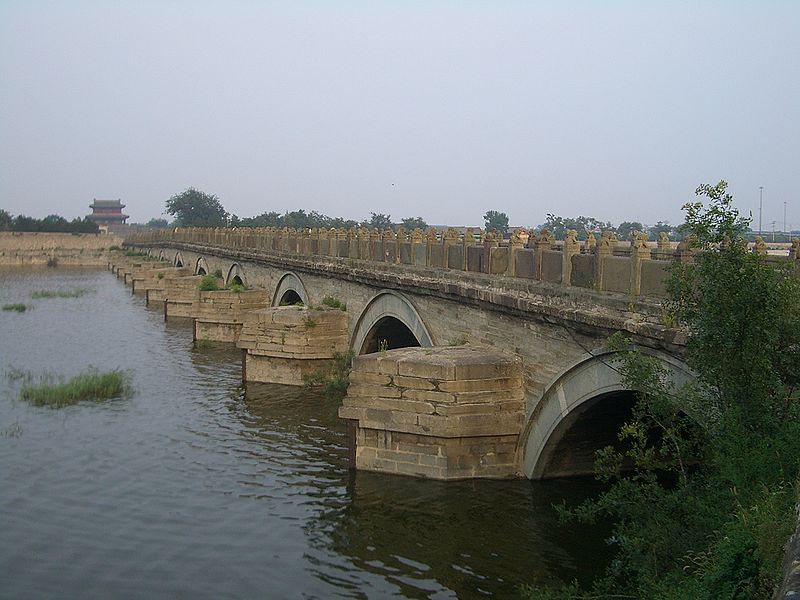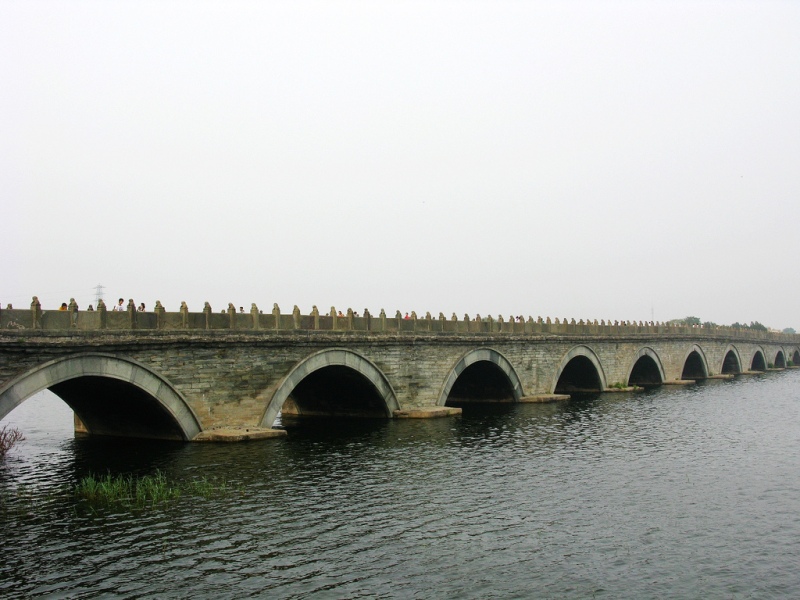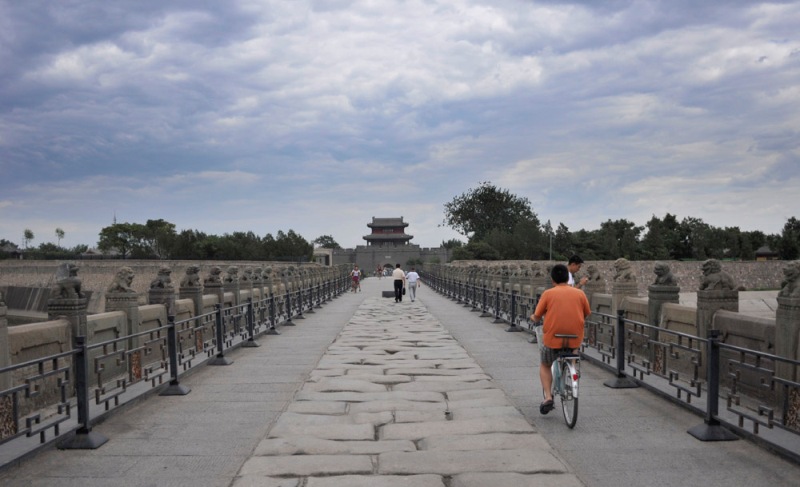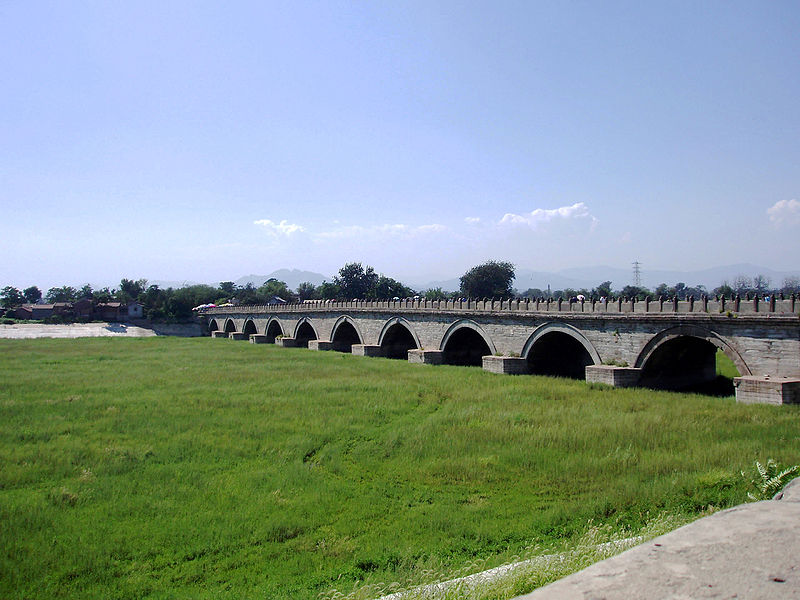| |||||||
Europe
North AmericaSouth AmericaAsiaAustralia and OceaniaAfrica |
Смотрите также: Lugou Bridge The Lugou Bridge, also known as the Marco Polo Bridge, is a famous stone bridge located 15 km southwest of the Beijing city center across the Yongding River —a main tributary of Hai River (although, in recent years, the water of Yongding river is diverted to different areas of Beijing so often there is no water under Lugou bridge). Administratively, the location is in Fengtai District of Beijing. Situated at the eastern end of the bridge is the Wanping Fortress, a historic 17th century fortress.
The Lugou Bridge is well-known because it was highly praised by the Venetian traveler Marco Polo during his visit to China in the 13th century (the bridge was later known in Europe simply as the Marco Polo Bridge), and for the Marco Polo Bridge Incident, which marked the beginning of the Sino-Japanese War (1937-1945).
Construction of the original bridge on this site commenced in 1189 and was completed in 1192 and was later reconstructed in 1698. The Lugou Bridge is 266.5 m (874 ft) in length and 9.3 m (30.5 ft) in width, supported on 10 piers and 11 segmental arches. Hundreds of artistically unique stone lions from different eras line both sides of the bridge. The most intriguing feature of these beasts is the fact that there are more lions hiding on the head, back or under the belly or on paws of each of the big lions. Investigations to determine the total number of animals have been carried out on several occasions but the results have proved inconsistent, ranging anywhere from 482 to 496. However, record has it that there were originally a total of 627 lions. The posture of each lion varies, as do their ages. Most date from the Ming (1368-1644) and Qing (1644-1911) dynasties, some are from the earlier Yuan Dynasty (1271-1368); while the few lions dating from as long ago as the Jin Dynasty (1115-1234) are now quite rare.
Four ornamental columns each 4.65 meters (15 ft) high and a white marble stele stand at the ends of the bridge. One stele records the reconstruction of the bridge by Emperor Kangxi of the Qing Dynasty in 1698. The other stele bears calligraphy by Emperor Qianlong, the grandson of Kangxi. It reads 'Morning moon over Lugou', and for the 700 years since its completion, the bridge has been a well known scenic spot in Beijing. As well as being famed for its aesthetic features, Lugou Bridge is also considered to be an architectural masterpiece. It is built of solid granite, with a large central arch flanked by ten smaller ones. Each of the ten piers is protected by triangular iron pillars that have been installed to prevent damage by flood and ice.
However, Lugou Bridge holds a very special place in the modern history of China, and more for painful memories rather than either its stunning beauty or amazing architectural achievement. It was here on the Marco Polo Bridge that the eight-year-long Second Sino-Japanese War commenced on July 7, 1937, that culminated with the surrender of Japan in 1945. Comments: 0 |
|
|||||










































